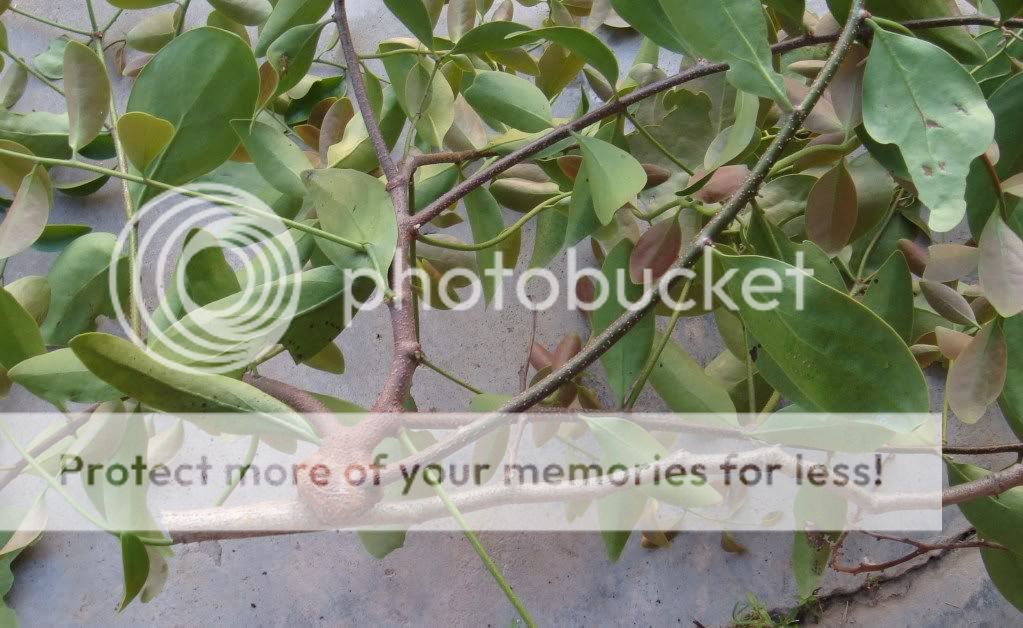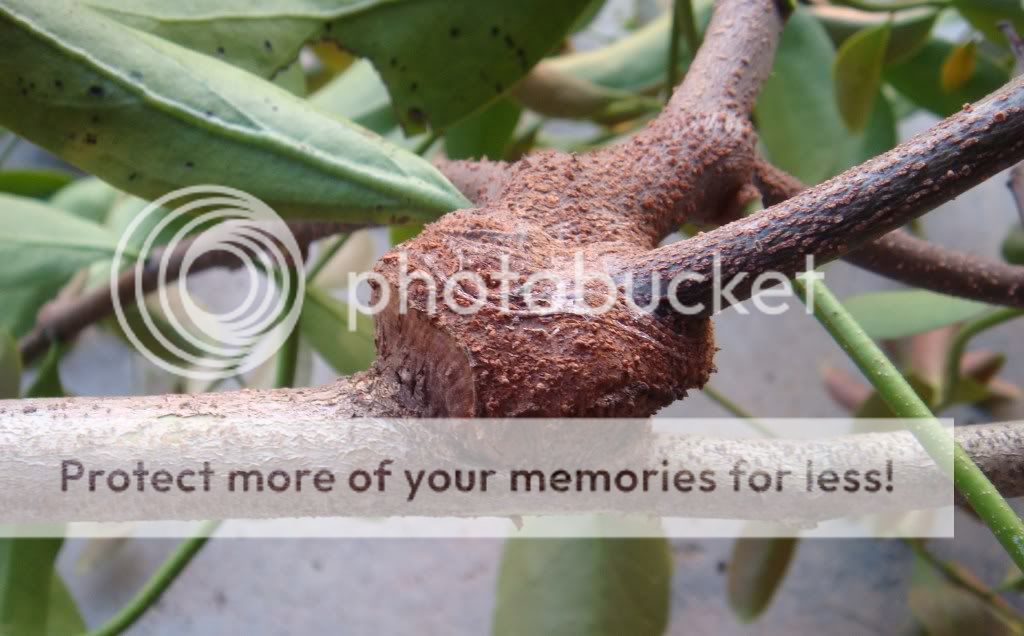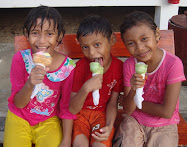Last Saturday, I was invited by a colleague to visit her kampung home and assist in picking fruit that was out of reach from the ground. She lives with her two children, and her two parents, and none of them were able to climb the large mangosteen tree from which they obtained the bulk of their mangosteen crop. Since I love visiting kampung homes, I jumped at the opportunity to motorcycle out of town on a bright and hot Saturday morning.

The
mangosteen (
Garcinia mangostana) is a slow-growing tree that takes around 15 years before producing fruit. But when it does begin, watch out! As can be seen from the photo, a dull purple fruit is produced that when ripped open shows sections (like an orange) of white pulpy flesh over small and soft, gray seeds. Mangosteens do not stay ripe very long, and must be picked and eaten within just a few days. To some of us,
mangosteen is the best-tasting fruit, beating even a good mango. I suspect that the reason I had never tasted one before was the difficulty in transporting them great distances since they do not appear to last long once picked.
When I arrived at my colleague's house, her mother directed me to the back part of the lot, through the chicken and duck pen, to a very tall mangosteen tree (around 10 meters in height) that had ample and alternating limbs up the trunk. All of the low-hanging fruit had already been picked by the father, who uses a long aluminum pole with a wire hook on the end. I climbed up the tree quite easily and used the pole to pull fruit off the upper branches. My colleague's two children -two of those shown at the Lis Na Ree swimming pool- ran around and picked up the fruit from the ground and placed them into a 5-gallon plastic bucket. Within around 20 minutes, we had filled an entire bucket with mangosteen, and there were no ripe fruit remaining.
Back at the front of the compound were two shorter (3-4 m) mangosteen trees that were quite thick in canopy. There was no need to climb more than 1 m up to where I could reach up into the upper part. These trees yielded only about 1/2 bucket.

Another fruit that I was asked to pick were from two different
lime bushes. In Malaysia there are three or four major types of limes: key lime (
limau nipis), kaffir lime (
limau purut), musk lime (
limau kasturi), and the pomelo (
limau bali). I was shocked to see that the key lime had thorns (called
duri) on its branches and I duly scratched myself in trying to pick all of the limes within reach from the ground. My experience has only been with the musk lime, which does not have thorns.
(Left, above: Key lime: limau nipis)
(Left, below: Kaffir lime: limau purut)
The key lime tastes like a lime should, very tart and sour. Mixed with cold water, it is probably the
most-refres hing
hing thing one can drink in the hot and humid tropics. Unlike the key lime, which has smooth skin, the kaffir lime is covered with wart-like bumps. In taste, it is not very sour and, has a fairly dull taste, not very pleasing. In cooking, the kaffir lime leaves are usually used, especially in Thai style.
For lunch, I was served some fried flat bread and offered my very own durian fruit. Durian is quite famous, both for its acquired taste, and for its hard and thorny shell. Most westerners decidedly do NOT like the smell or taste of durian. After several years of agreeing with them, I was pleasantly surprised by a neighbor who gave me a durian freshly picked from his own orchard. Since then, I have determined that the smelly ones are those hybrids, picked and shipped long distances, whereas the kampung-grown durians,
non-hydrids, actually do not smell bad and taste quite good.
Durian has 3-4 sections within its hard shell, and these sections are a flesh coverin

g a hard and almond-colored seed. The flesh has the consistency of custard. The problem that I have with durian is that it is a heating fruit, and causes great amounts of gas throughout the remainder of the day. It is truly the fruit that keeps on giving!
Durian (
Durio zibethinus) is considered the King of Fruit, and great research and care goes into growing the correct varieties and practicing the right amount of horticultural husbandry. The trees grow up to 40 meters in height and can take several years before they flower and fruit. July is the primary fruit-bearing month and so mounds of the fruit are found displayed EVERYWHERE. The spiny nut is quite large, from softball size to football size. Malays have proverbs about not walking under Durian trees during July because a donk on the head could be serious. Sitting there on Saturday, eating mangosteen, we could hear a nut or two hit the ground with a thud. It is better to let the Durian fall itself, rather than trying to climb up and pick.
The final fruit variety that I sampled this past Saturday was what the Malays call
macang. Macang is a variety of mango that has a smell and taste that I can only describe as a cross between a normal mango and a durian. I prefer my mangos to taste like mangos, so I will probably not partake of macang again.
Finally, even though I did not pick any rambutan this past week, I was given a large bag by another colleague

whose kampung compound has a large rambutan tree.
Rambutan (
Nephelium lappaceum) produces either red or golden hairy fruit (
rambut is Malay for hair). Inside the fruit (about the size of a golf ball) is a translucent, grapelike flesh covering a seed that looks like an almond. Rambutan is probably the second-most favorite fruit for westerners and one can easily eat a dozen in one sitting.
(
Left: Rambutan, the hairy fruit)
 In our front yard we have been growing a Tapak Kuda tree for three years (Bauhinia blakeana). Last year I noticed that one branch looked a bit strange and when I investigated (climbed my ladder), I realised that a branch of another tree species -Jambu Bol (Eugenia malaccensis)- was growing out of a wound in one of the Tapak Kuda branches!
In our front yard we have been growing a Tapak Kuda tree for three years (Bauhinia blakeana). Last year I noticed that one branch looked a bit strange and when I investigated (climbed my ladder), I realised that a branch of another tree species -Jambu Bol (Eugenia malaccensis)- was growing out of a wound in one of the Tapak Kuda branches! and took it to a wedding kenduri to show to a former colleague of mine, a woman who holds the BSc degree in Biology. She had never seen or heard of such a graft, obviously a wild graft done either by birds or insects. I kept the branch and plan on doing a thin-slice cross-section someday.
and took it to a wedding kenduri to show to a former colleague of mine, a woman who holds the BSc degree in Biology. She had never seen or heard of such a graft, obviously a wild graft done either by birds or insects. I kept the branch and plan on doing a thin-slice cross-section someday. online that describe such wild grafts. So, I am asking blog readers for help. Does anyone out there know of other such grafts?
online that describe such wild grafts. So, I am asking blog readers for help. Does anyone out there know of other such grafts? and took it to a wedding kenduri to show to a former colleague of mine, a woman who holds the BSc degree in Biology. She had never seen or heard of such a graft, obviously a wild graft done either by birds or insects. I kept the branch and plan on doing a thin-slice cross-section someday.
and took it to a wedding kenduri to show to a former colleague of mine, a woman who holds the BSc degree in Biology. She had never seen or heard of such a graft, obviously a wild graft done either by birds or insects. I kept the branch and plan on doing a thin-slice cross-section someday. online that describe such wild grafts. So, I am asking blog readers for help. Does anyone out there know of other such grafts?
online that describe such wild grafts. So, I am asking blog readers for help. Does anyone out there know of other such grafts?



































